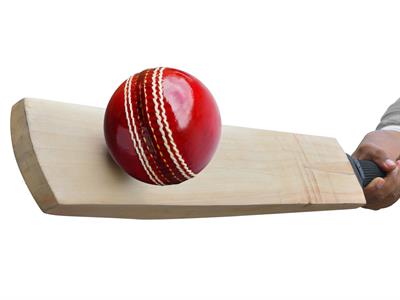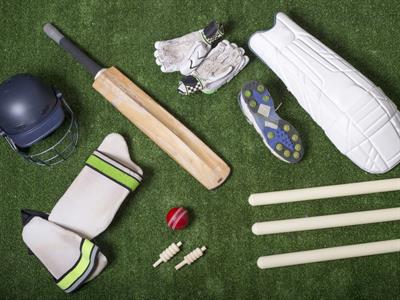PDF chapter test TRY NOW
If you look at the game’s equipment, you can see how cricket both changed with changing times and yet fundamentally remained true to its origins in rural England. Cricket’s most important tools are all made of natural, pre- industrial materials. The bat is made with leather, twine and cork. Even today both bat and ball are handmade, not industrially manufactured. The material of the bat changed slightly over time. Once it was cut out of a single piece of wood. Now it consists of two pieces, the blade which is made out of the wood of the willow tree and the handle which is made out of cane that became available as European colonialists and trading companies established themselves in Asia. Unlike golf and tennis, cricket has refused to remake its tools with industrial or man-made materials: plastic, fibreglass and metal have been firmly rejected.
But in the matter of protective equipment, cricket has been influenced by technological change. The invention of vulcanised rubber led to the introduction of pads in 1848 and protective gloves soon afterwards, and the modern game would be unimaginable without helmets made out of metal and synthetic lightweight materials.
Explanation:
Guha gives another example of how cricket has evolved through the years. He talks about the equipment used by the cricketers and how it has undergone certain changes. Although there have been many changes as the years went by, it stayed true to the spirit of the game. Cricket originated in England, and even today, it still has not altered the essence of the game from the times it began. In the beginning stages, it was played only for the sake of entertainment among young boys. But even then, the equipment and the method of the game was the same as the present times. There were alterations only in the shape and the size. The materials with which it was made were natural and pre-industrial ones.

Bat and ball from pre-industrial materials
Pre-industrial materials refer to those that were used or manufactured before the industrial revolution. Cricket was existent even before the \(19th\) century, when the Industrial Revolution began. Initially, people played with sticks, stumps, twine balls etc, which remains the same even today. There were no factories or machines that produced the equipment in bulk quantities. Most localities had a shop where a craftsman who had expertise in the area would make handmade bats and balls from trees and other small wooden things.
A cricket bat is made of stuff like leather, twine and cork. But as time progressed, the material of the bat changed as it had to be more flexible to overcome a ball that is pitched in the air. So the cricket bat is now made out of the wood of a willow tree. Initially, the bat was made out of a single piece of wood cut from the same tree. But as years progressed, the handle was made out of cane, which is the hollow jointed stem of tall grass like bamboo or sugarcane. The hollow cane is moulded to make the handle of the bat to provide more grip. The rest of the batting portion is made out of the wood of a willow tree. The production of cane became significant in the colonising agenda of European traders, as millions of African slaves were brought and made to toil in sugarcane plantations, thereby earning profit. Other games like golf and tennis have made use of man made materials like fibreglass or plastic, which is a trend that cricket has refused to adhere to. But when it comes to the parts of the equipment like pads, guards, helmets etc, cricket has made good use of technological advancements as they are required to be safe. The pads and gloves that were introduced in \(1848\) are made up of vulcanised rubber, and the helmets are made up of metals and other lightweight synthetic materials.

Cricket equipment
Meaning of difficult words:
| S.No | Words | Meaning |
1 | Equipment | The necessary items for a particular purpose |
2 | Fundamentally | Most importantly |
3 | Rural | Countryside that is outside the city |
4 | Twine | Strong thread or string |
5 | Willow tree | A tree that grows mostly near water and has branches that hangs down |
6 | Cork | A hard brown substance extracted from an oak tree |
7 | Vulcanised rubber | Rubber heated with chemicals |
8 | Expertise | Having a strong knowledge in an area |
9 | Fibreglass | A fabric made of glass filaments |
Reference:
National Council of Educational Research and Training (2007). Honeycomb. The Cricket Story- Ramachandra Guha (pp. 139-151). Published at the Publication Division by the Secretary, National Council of Educational Research and Training, Sri Aurobindo Marg, New Delhi.
